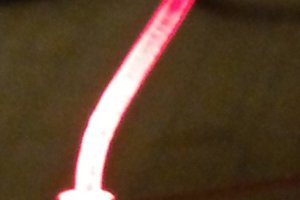Each stepping stone will have one or two bundles of fibers sticking out of it (depending on the number of stars), which will then be run under the dirt to a couple of central lighting sources. Each bundle is lit by a single programmable RGB LED on an LED strip. All the strips are daisy-chained together along the path and ultimately controlled by a ESP32-based controller. That in turn is controlled over MQTT, which allows direct control of the color for each stone. Special animation patterns, such as a slow-cycle rainbow animation and the current zodiac sign can be activated over MQTT too.
To align the LED strips to the fiber ends, each fiber bundle is crimped with a unsheathed ferrule and then placed in a 3D printed housing that holds the strip at a fixed distance to the end of the fiber bundles.
 Steve Pomeroy
Steve Pomeroy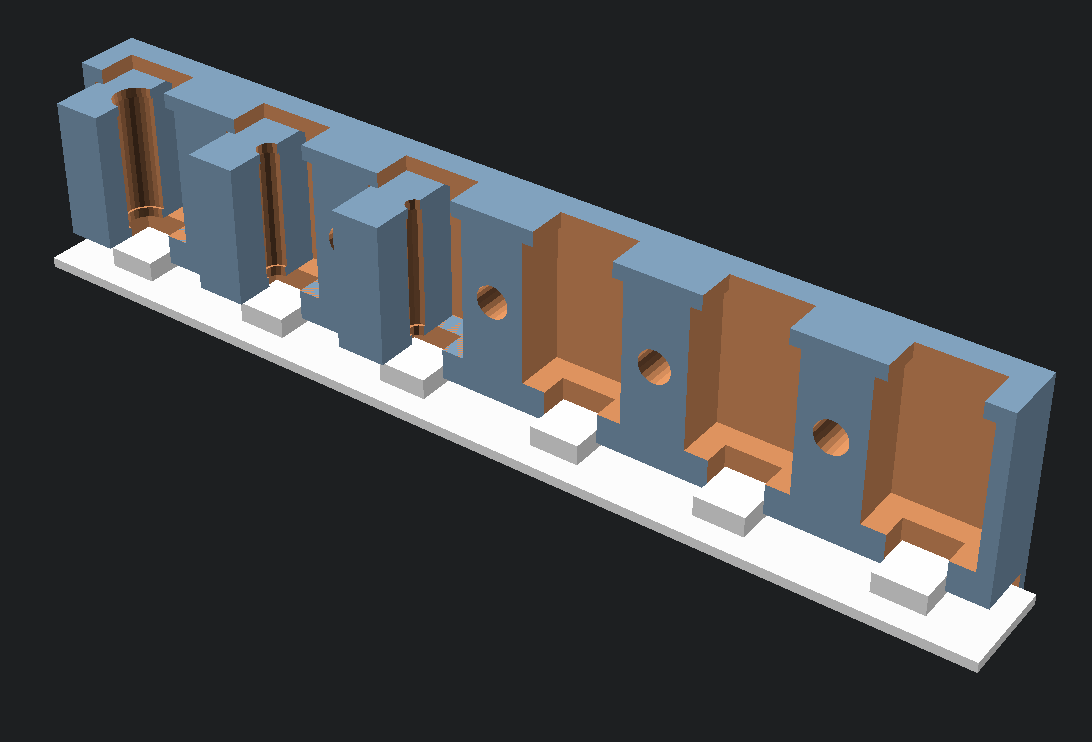 Crimping the fibers with wire ferrules is something I saw with a piece of fiber optic fabric that I bought. I didn't know what wire ferrules were when I saw it, but remembered them when got some for another project. I tried it out with the 1mm plastic fibers and it works great!
Crimping the fibers with wire ferrules is something I saw with a piece of fiber optic fabric that I bought. I didn't know what wire ferrules were when I saw it, but remembered them when got some for another project. I tried it out with the 1mm plastic fibers and it works great!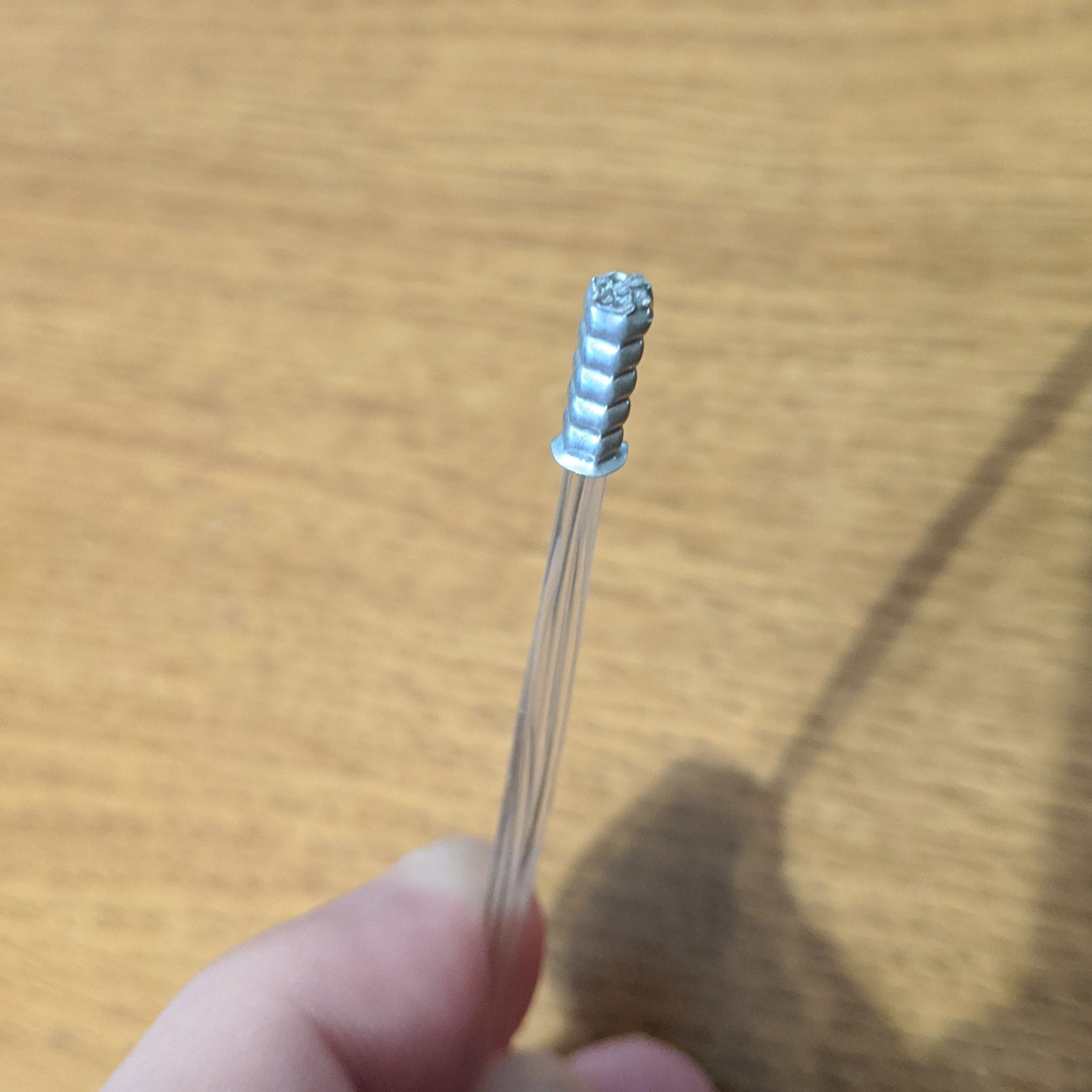
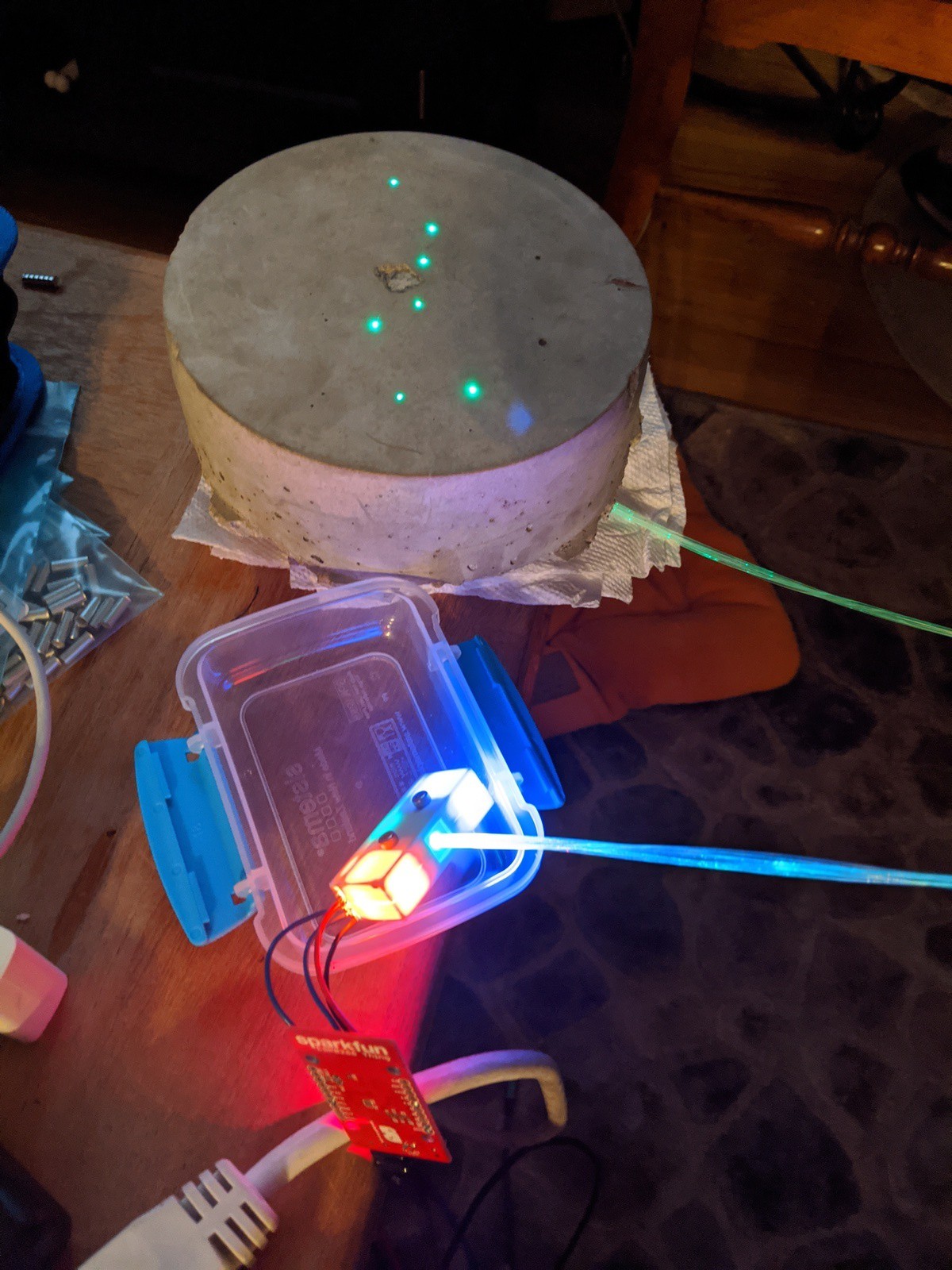
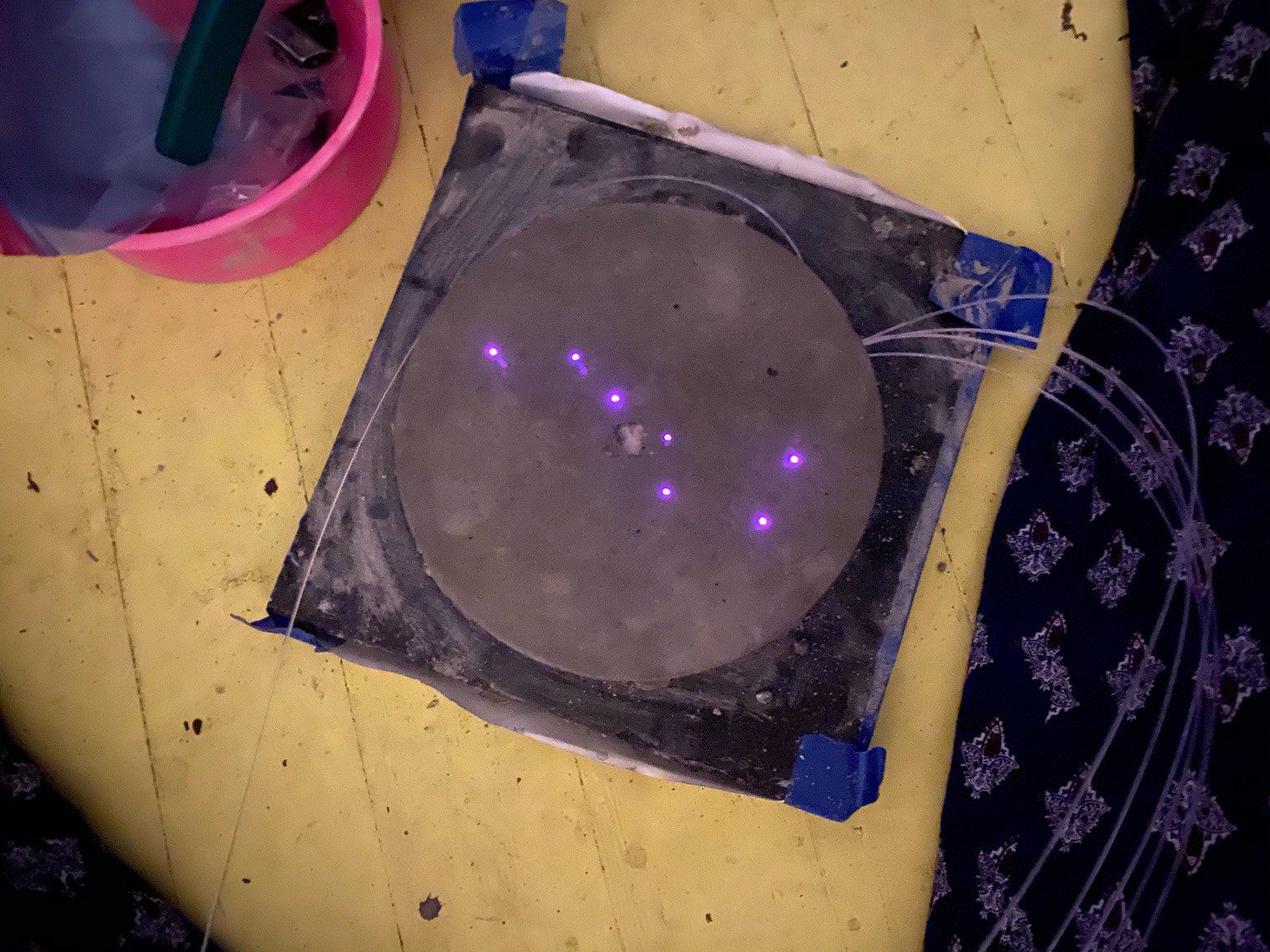 First light! The test pour worked and the fibers light!
First light! The test pour worked and the fibers light!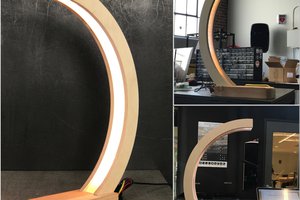
 todbot
todbot
 Oakmizer
Oakmizer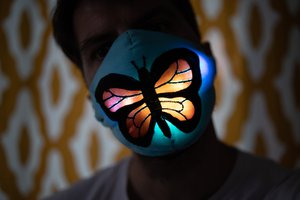
 Sander van de Bor
Sander van de Bor